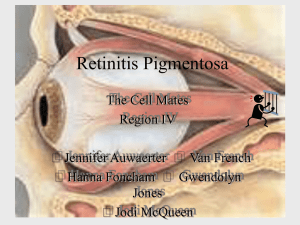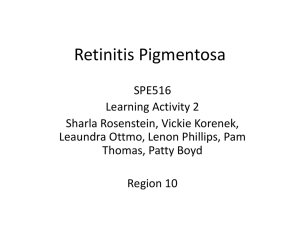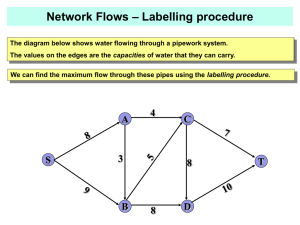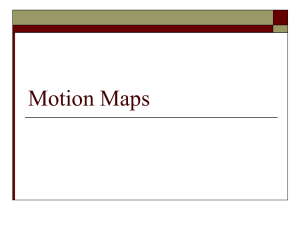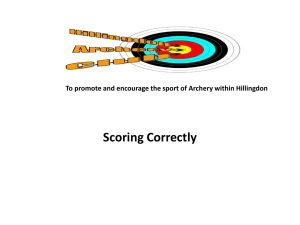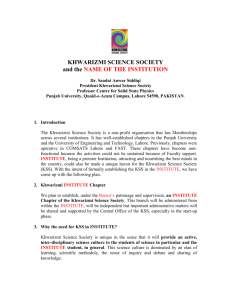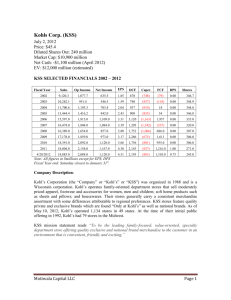Progressive External Ophthalmoplegia
advertisement
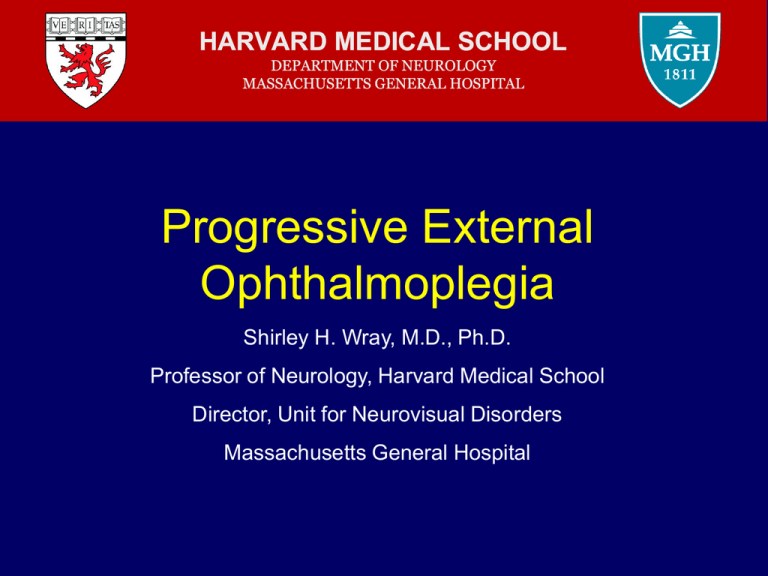
HARVARD MEDICAL SCHOOL DEPARTMENT OF NEUROLOGY MASSACHUSETTS GENERAL HOSPITAL Progressive External Ophthalmoplegia Shirley H. Wray, M.D., Ph.D. Professor of Neurology, Harvard Medical School Director, Unit for Neurovisual Disorders Massachusetts General Hospital Figure 1. Fundus OD atypical retinitis pigmentosa. Figure 2. Fundus OS atypical retinitis pigmentosa. Figure 3. Fundus peripheral retina atypical retinitis pigmentosa. Figure 4. Retinal atrophy Figure 5. Skeletal muscle ragged red fibers (Hemotoxylim eosin) Figure 6. Skeletal muscle ragged red fibers (Gomori trichrome) Figure 7. Skeletal muscle ragged red fibers (NADH) Figure 8. Skeletal muscle electronmicroscopy in KSS Table 1. Mitrochondrial myopathy: clinical features Table 2. Mitrochondrial myopathy: MR findings Figure 9. A 61-year old woman (patient 1) with KSS, moderately severe truncal and appendicular ataxia, and a documented mtDNA deletion. A T1-weighted sagittal image demonstrates severe cerebellar vermian atrophy (arrow) Figure 10. A 23-year old man (patient 2) with KSS, cognitive impairment, ataxia and an mtDNA deletion. A. T2 weighted image demonstrates regions of hyperintense signal (arrows) in the subcortical white matter. The periventricular regions were spared. B. T2-weighted image shows foci of hyperintense signal (arrows) in the dorsal midbrain. Figure 11. A 37-year old woman (patient B) with CPEO manifested by external ophthalmoplegia, ataxia, and sensorineural hearing loss. A. Long-repetition-time/short-echo-time (proton density) axial image. In the frontal lobes, abnormal hyperintense signal predominates in the subcortical white matter (arrows), whereas in the posterior temporal and parietal lobes the abnormal signal extended from the subcortical regions to the ventricular surface (curved arrows). B. T2-weighted axial MR image demonstrates bilateral hyperintense signal abnormalities in the globus pallidus (arrows). Hyperintense white matter abnormalities and ventricular dilation are also present. C. T1-weighted sagittal image demonstrates cerebral cortical and cerebellar vermian atrophy (arrow) and thinning of the corpus callosum. http://www.library.med.utah.edu/NOVEL
